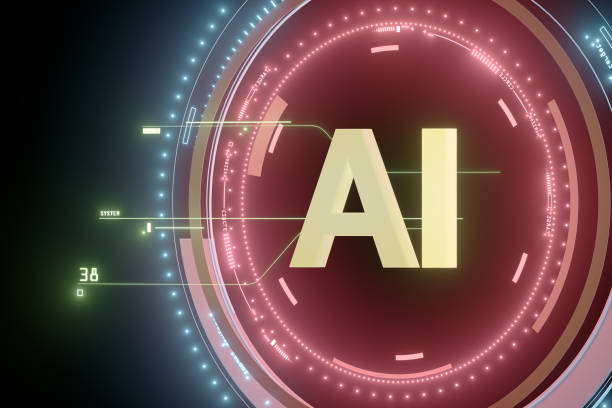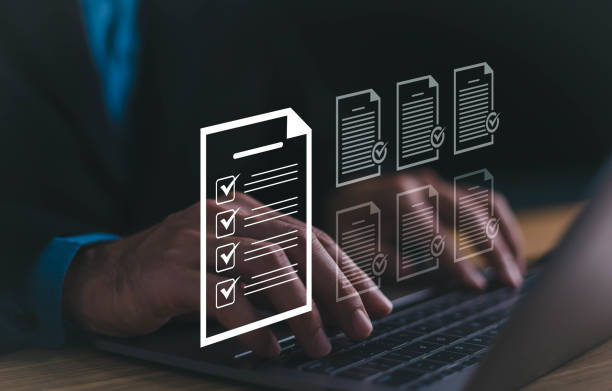What is an artificial intelligence robot and what are its uses?
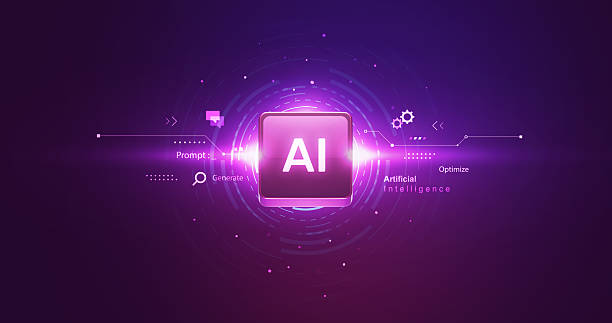
What is an artificial intelligence robot and what are its uses?
In today’s world, #artificial_intelligence and robotics are advancing rapidly, and we are witnessing the emergence of intelligent robots in various fields.
But what exactly is an artificial intelligence robot? In short, an artificial intelligence robot is a physical or software machine that, using artificial intelligence algorithms, is capable of performing tasks that typically require human intelligence.
These tasks can include learning, reasoning, problem-solving, pattern recognition, and natural language understanding.
The applications of artificial intelligence robots are vast and diverse.
In industry, these robots can be used to automate production processes, control quality, and perform dangerous tasks.
In medicine, surgical robots help doctors perform more precise surgeries, and nurse robots can care for patients.
In customer service, chatbots answer customer questions and solve their problems.
In education, teacher robots can help students better understand complex concepts.
Even in everyday life, artificial intelligence robots can help us with household chores, planning, and entertainment.
For example, industrial robots used in factories can use machine vision to identify defective parts and remove them from the production line.
Surgical robots can perform surgeries with greater precision than human surgeons, reducing the risk of damage to healthy tissue.
Chatbots can answer customer questions 24 hours a day, 7 days a week, reducing the need for human resources.
These are all examples of the diverse applications of artificial intelligence robots in today’s world.
Are you disappointed with the low conversion rate of your online store? Rasaweb will turn your online store into a powerful tool for attracting and converting customers!
✅ Significant increase in visitor-to-buyer conversion rate
✅ Unparalleled user experience to increase customer satisfaction and loyalty⚡ Get free consultation from Rasaweb!
Types of Artificial Intelligence Robots: A Look at Classifications
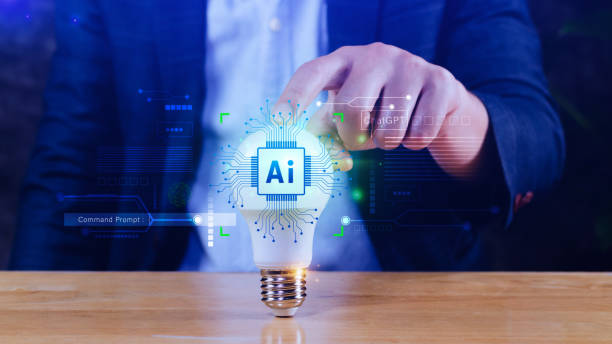
Types of Artificial Intelligence Robots: A Look at Classifications
Artificial intelligence robots can be classified based on various criteria.
One of the most common methods of classification is based on the type of tasks the robot is capable of performing.
Based on this, robots can be divided into the following categories
Industrial Robots These robots are typically used to perform repetitive and precise tasks on production lines.
They can perform welding, painting, packaging, and assembly of parts.
Service Robots These robots are designed to provide services to humans.
They can be used in various fields such as elderly care, cleaning, delivery of goods, and customer service.
Medical Robots These robots are used in hospitals and medical centers to assist doctors and nurses.
They can perform surgeries, prescribe medication, and care for patients.
Military Robots These robots are used in armies to perform dangerous and high-risk tasks.
They can perform mine detection, bomb disposal, and reconnaissance operations.
Explorer Robots These robots are designed to explore dangerous and inaccessible environments for humans.
They can be sent to the depths of the sea, space, and areas contaminated with radioactive materials.
In addition to this classification, artificial intelligence robots can also be classified based on their level of intelligence.
Some robots are only capable of performing simple and pre-defined tasks, while others can learn, reason, and make decisions.
Artificial intelligence robots with a higher level of intelligence have the ability to adapt to new situations and solve complex problems.
Main Components of an Artificial Intelligence Robot: Hardware and Software
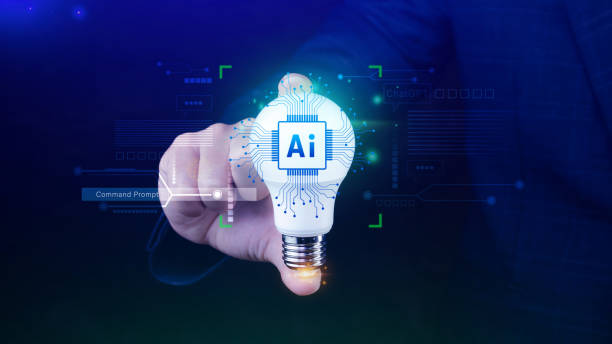
Main Components of an Artificial Intelligence Robot: Hardware and Software
An artificial intelligence robot consists of two main parts: hardware and software.
Hardware includes the physical parts of the robot such as the body, motors, sensors, and processors.
Software includes the artificial intelligence algorithms that allow the robot to perform its tasks.
Hardware
Body The robot’s body is the framework that holds the other parts together.
The body can be made of various materials such as metal, plastic, or composite.
Motors Motors allow the robot to move.
There are different types of motors, including electric motors, hydraulic motors, and pneumatic motors.
Sensors Sensors allow the robot to sense its surroundings.
There are different types of sensors, including vision sensors, auditory sensors, tactile sensors, and temperature sensors.
Processors Processors are the brain of the robot.
They receive information from the sensors, run artificial intelligence algorithms, and instruct the motors to move.
Software
The software of an artificial intelligence robot includes the artificial intelligence algorithms that allow the robot to perform its tasks.
These algorithms can include the following:
Machine Learning Machine learning allows the robot to learn from data and improve its performance.
Natural Language Processing Natural language processing allows the robot to understand human language and communicate with humans.
Machine Vision Machine vision allows the robot to see and understand images.
Planning Planning allows the robot to plan a series of actions to achieve a goal.
| Component | Description |
|---|---|
| Body | The main framework of the robot that holds the other components. |
| Motors | Responsible for the robot’s movement. |
| Sensors | Collect information from the surrounding environment. |
| Processors | Process information and control the robot. |
Key Algorithms in Artificial Intelligence Robots
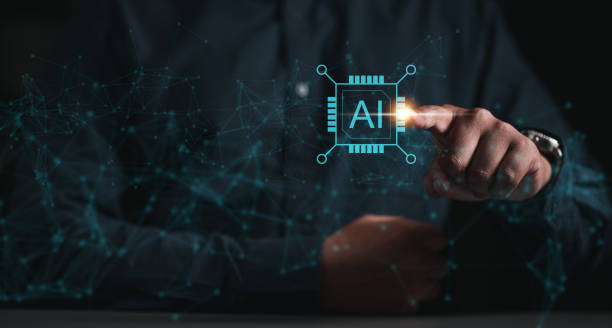
Key Algorithms in Artificial Intelligence Robots
Artificial intelligence algorithms play a vital role in the performance of artificial intelligence robots.
These algorithms allow robots to process data, recognize patterns, make decisions, and perform complex tasks.
Here are some of the key algorithms in artificial intelligence robots
Machine Learning Machine learning allows robots to learn from data and improve their performance.
Machine learning algorithms can be used to train robots in various fields such as object recognition, navigation, and control.
Neural Networks Neural networks are computational models inspired by the structure of the human brain.
These networks can be used to solve complex problems such as image recognition, natural language processing, and robot control.
Search Algorithms Search algorithms are used to find the best solution for a problem.
These algorithms can be used for path planning, puzzle solving, and decision-making in uncertain conditions.
Expert Systems Expert systems are artificial intelligence systems that simulate the knowledge and experience of human experts in a specific field.
These systems can be used to provide advice, diagnose errors, and make decisions in complex situations.
Artificial intelligence robots equipped with expert systems can appear as an expert.
Natural Language Processing Natural language processing allows robots to understand human language and communicate with humans.
These algorithms can be used to answer questions, translate languages, and generate text.
The choice of the appropriate algorithm for an artificial intelligence robot depends on the type of task that the robot must perform.
For example, a robot that needs to recognize objects needs a machine learning algorithm, while a robot that needs to communicate with humans needs a natural language processing algorithm.
Is your current online store design causing you to lose customers and sales?
Rasaweb, with its modern and user-friendly online store designs, is your solution!
✅ Significant increase in conversion rate and sales
✅ Creating strong branding and gaining customer trust
⚡ Get a free consultation on online store design from Rasaweb!
Challenges and Limitations of Artificial Intelligence Robots
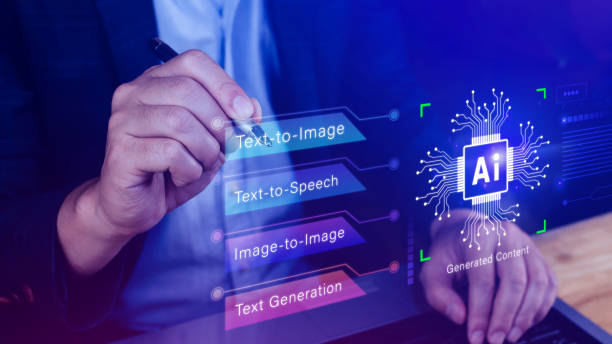
Challenges and Limitations of Artificial Intelligence Robots
Despite the remarkable advances in the field of artificial intelligence and robotics, artificial intelligence robots still face many challenges and limitations.
These challenges can be technical, ethical, social, and economic.
Technical Challenges
Hardware Limitations Robot hardware is still very limited compared to the human brain.
Robots cannot think, learn, and adapt to their surroundings as quickly as humans.
Software Problems Artificial intelligence algorithms still have difficulty understanding natural language, recognizing emotions, and solving complex problems.
Data Dependence Machine learning algorithms require a lot of data for training.
If the data is incomplete, inaccurate, or biased, the robot’s performance will also be affected.
Ethical Challenges
Accountability If an artificial intelligence robot makes a mistake and causes harm, who will be responsible?
Privacy Robots can collect a lot of information about humans.
How can this information be protected?
Discrimination If artificial intelligence algorithms are biased, they can lead to discrimination.
Social Challenges
Job Displacement Artificial intelligence robots can eliminate many jobs.
How can we prepare for this?
Inequality Artificial intelligence robots can increase inequality in society.
How can we prevent this?
Economic Challenges
High Cost Developing and maintaining artificial intelligence robots is very expensive.
Can everyone have access to this technology?
Competition Countries and companies compete with each other to develop artificial intelligence robots.
This competition can lead to a technology war.
Overcoming these challenges and limitations requires the joint efforts of researchers, policymakers, and society.
Through cooperation and innovation, we can benefit from the advantages of artificial intelligence robots and avoid their potential risks.
What to Expect from the Future of Artificial Intelligence Robots

What to Expect from the Future of Artificial Intelligence Robots
The future of artificial intelligence robots is very exciting and full of potential.
With the increasing advances in the field of artificial intelligence, it is expected that robots will play a more prominent role in our lives in the future.
Here are some of the key trends that are shaping the future of artificial intelligence robots
Increased Intelligence Artificial intelligence robots will become more intelligent in the future and will be able to perform more complex tasks.
They can learn, reason, and make decisions.
Expanding Applications Artificial intelligence robots will be used in various fields such as industry, medicine, services, education, and entertainment.
Better Interaction with Humans Artificial intelligence robots will be able to interact with humans more naturally in the future.
They can understand human language, recognize emotions, and answer questions.
Greater Autonomy Artificial intelligence robots will become more autonomous in the future and will be able to perform tasks without human intervention.
They can work in dangerous and inaccessible environments for humans.
Cost Reduction With the advancement of technology, the cost of developing and maintaining artificial intelligence robots will decrease.
This will make this technology accessible to more individuals and organizations.
In the future, we will witness the emergence of artificial intelligence robots in homes, workplaces, hospitals, schools, and other places.
These robots can help us with everyday tasks, take care of us, educate us, and entertain us.
However, it is important to pay attention to the challenges and limitations of artificial intelligence robots and to prepare for the responsible and ethical use of this technology.
Key Points for Developing and Using Artificial Intelligence Robots

Key Points for Developing and Using Artificial Intelligence Robots
Developing and using artificial intelligence robots requires attention to key points.
These points can help developers, policymakers, and users use this technology effectively and responsibly.
Focus on Needs Before developing an artificial intelligence robot, the needs of users and society should be carefully examined.
The robot must address a real problem and create added value.
Use of High-Quality Data Machine learning algorithms require a lot of data for training.
The data must be high quality, accurate, and unbiased.
Adherence to Ethical Principles The development and use of artificial intelligence robots must be done in accordance with ethical principles.
Robots should not harm humans, violate their privacy, or cause discrimination.
Transparency The performance of artificial intelligence robots must be transparent.
Users should know how the robot works and how it makes decisions.
Accountability It should be clear who is responsible for the performance of the artificial intelligence robot.
In case of an error, there must be a mechanism for accountability.
| Point | Description |
|---|---|
| Focus on Needs | The robot must address a real problem. |
| Use of High-Quality Data | The data must be accurate and unbiased. |
| Adherence to Ethical Principles | The robot should not harm humans. |
| Transparency | The robot’s performance should be understandable. |
| Accountability | It should be clear who is responsible for the robot. |
Training Users should be trained on how to use artificial intelligence robots correctly.
They should know what the robot is capable of and what its limitations are.
By following these key points, artificial intelligence robots can be used effectively and responsibly, and their benefits can be realized.
The Impact of Artificial Intelligence Robots on the Economy and the Labor Market
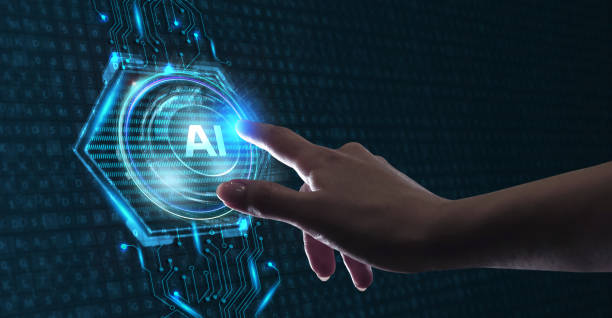
The Impact of Artificial Intelligence Robots on the Economy and the Labor Market
The entry of artificial intelligence robots into the economy and the labor market has brought about widespread changes.
These changes can be both positive and negative.
Here are some of the key impacts of artificial intelligence robots on the economy and the labor market
Increased Productivity Artificial intelligence robots can perform tasks faster, more accurately, and at a lower cost than humans.
This can lead to increased productivity in various industries.
Creation of New Jobs Artificial intelligence robots need to be developed, maintained, and supported.
This can lead to the creation of new jobs in various fields such as robotics engineering, data science, and artificial intelligence.
Job Displacement Artificial intelligence robots can eliminate many jobs that require repetitive and routine tasks.
This can lead to increased unemployment.
Changing the Nature of Jobs Artificial intelligence robots can change the nature of many jobs.
Humans need to learn new skills to be able to cooperate with artificial intelligence robots and perform more complex tasks.
Increased Inequality Artificial intelligence robots can increase inequality in society.
People who do not have the skills necessary to work with artificial intelligence robots may face difficulties in the labor market.
To address the challenges posed by the entry of artificial intelligence robots into the economy and the labor market, the following measures should be taken
Investing in Education Investment should be made in educating individuals so that they can learn the skills necessary to work with artificial intelligence robots.
Supporting Innovation Innovation in the field of artificial intelligence and robotics should be supported to create new jobs.
Creating Safety Nets Strong social safety nets should be created to support people who lose their jobs.
By taking these measures, the benefits of artificial intelligence robots can be realized and their potential risks can be avoided.
Are you losing business opportunities because of an outdated website? With Rasaweb, solve the problem of not attracting potential customers through your website forever!
✅ Attract more high-quality leads
✅ Increase brand credibility in the eyes of customers
⚡ Get a free consultation on corporate website design
Introducing Some Successful Examples of Artificial Intelligence Robots in the Real World

Introducing Some Successful Examples of Artificial Intelligence Robots in the Real World
Today, artificial intelligence robots are used in various fields and play an important role in our lives.
Here are some successful examples of artificial intelligence robots in the real world
Surgical Robots These robots help doctors perform more precise surgeries.
The Da Vinci surgical robot is one of the most famous surgical robots that is used in various surgical procedures such as heart surgery, prostate surgery, and cancer surgery.
Warehouse Robots These robots are used in warehouses to move and sort goods.
Amazon Robotics warehouse robots are one of the most famous warehouse robots that are used in Amazon warehouses.
Customer Service Robots These robots are used to answer customer questions and provide support services.
Chatbots are one type of customer service robot that can answer customer questions 24 hours a day, 7 days a week.
Agricultural Robots These robots are used in farms to perform tasks such as planting, tending, and harvesting crops.
Agricultural robots can help farmers increase their productivity and reduce their costs.
Educational Robots These robots are used in schools and universities to educate students.
Educational robots can help students better understand complex concepts and learn new skills.
Artificial intelligence robots open a new window to learning by being present in the field of education.
These are just a few examples of artificial intelligence robots in the real world.
With the advancement of technology, it is expected that we will see the emergence of artificial intelligence robots in more fields in the future.
How Artificial Intelligence Robots Will Transform Our Lives

How Artificial Intelligence Robots Will Transform Our Lives
Artificial intelligence robots are rapidly becoming an integral part of our lives.
They are currently used in various fields such as industry, medicine, services, and education and play an important role in improving our quality of life.
Here are some examples of how artificial intelligence robots are transforming our lives
Improving Health Artificial intelligence robots can help doctors make more accurate diagnoses, perform more complex surgeries, and care for patients more effectively.
Nurse robots can care for the elderly and patients and help them with everyday tasks.
Increasing Productivity Artificial intelligence robots can perform tasks faster, more accurately, and at a lower cost than humans.
This can lead to increased productivity in various industries and help us manage our time and resources more effectively.
Creating New Opportunities Artificial intelligence robots can create new opportunities for education, entertainment, and communication.
Educational robots can help students better understand complex concepts and learn new skills.
Artificial intelligence robots are also very effective in content creation and entertainment.
Reducing Risks Artificial intelligence robots can work in dangerous and inaccessible environments for humans.
Firefighting robots can help extinguish fires, and explorer robots can travel to space and the depths of the sea.
Improving Quality of Life Artificial intelligence robots can help us live more comfortable, healthier, and happier lives.
Home robots can help us with household chores, and companion robots can help us stay connected with friends and family.
However, it is important to pay attention to the challenges and potential risks posed by artificial intelligence robots and to prepare for the responsible and ethical use of this technology.
The development of artificial intelligence robots is a collective responsibility, and we all need to participate in this process.
FAQ
| Question | Answer |
|---|---|
| What is an artificial intelligence robot? | It is a robot that uses artificial intelligence capabilities to understand the environment, reason, learn, and make decisions to perform complex tasks independently. |
| What is the main difference between a regular robot and an artificial intelligence robot? | Artificial intelligence robots can learn and adapt to their environment, while regular robots typically operate based on fixed and pre-determined programming. |
| In what areas are artificial intelligence robots used? | In areas such as industry (production lines), medicine (robotic surgeries), services (customer support, smart vacuum cleaners), exploration (space and underwater), and entertainment. |
| How do artificial intelligence robots learn? | They acquire new skills through machine learning (ML) and deep learning algorithms, by analyzing big data and identifying patterns. |
| Can artificial intelligence robots have emotions? | Currently, no. They can identify or simulate emotions, but they do not have the real experience of emotions like humans. |
| What are the most important benefits of using artificial intelligence robots? | Increased productivity, reduced human error, performing dangerous or repetitive tasks, and providing innovative and efficient services. |
| What challenges exist in developing artificial intelligence robots? | The need for abundant and high-quality data, the complexity of algorithms, ethical issues, cybersecurity, and high research and development costs. |
| Are artificial intelligence robots dangerous to humans? | No, if safe design principles and ethical regulations are followed. Concerns are more related to social and economic impacts such as changes in the labor market. |
| What is an example of an artificial intelligence robot in everyday life? | Smart vacuum cleaner robots (such as Roomba) that automatically map and clean the house, or smart voice assistants (such as Siri and Alexa). |
| How is the future of artificial intelligence robots predicted? | They are expected to become smarter, more autonomous, and capable of more complex interaction with humans, and play a more prominent role in industry, medicine, transportation, and everyday life. |
And other services of Rasa Web Advertising Agency in the field of advertising
Intelligent Marketing Automation: Professional optimization for online growth using Google Ads Management.
Smart Brand Identity: A creative platform to improve website traffic with Google Ads Management.
Intelligent Direct Marketing: Designed for businesses looking to improve SEO ranking through custom programming.
Intelligent Direct Marketing: An effective tool for managing campaigns with the help of custom programming.
Intelligent Marketing Automation: An innovative service to increase SEO ranking by optimizing key pages.
And more than a hundred other services in the field of internet advertising, advertising consulting, and organizational solutions
Internet Advertising | Advertising Strategy | Reportage Advertisement
Sources
What are smart robots and how do they work?
,Production of a smart robot with new capabilities for homemakers
,The impact of artificial intelligence on working relationships and employment
,What is a smart robot and what are its applications?
? Build the future of your business in the digital world with Rasaweb! Contact us today for professional corporate website design and targeted digital marketing campaigns.
📍 Tehran, Mirdamad Street, next to the

